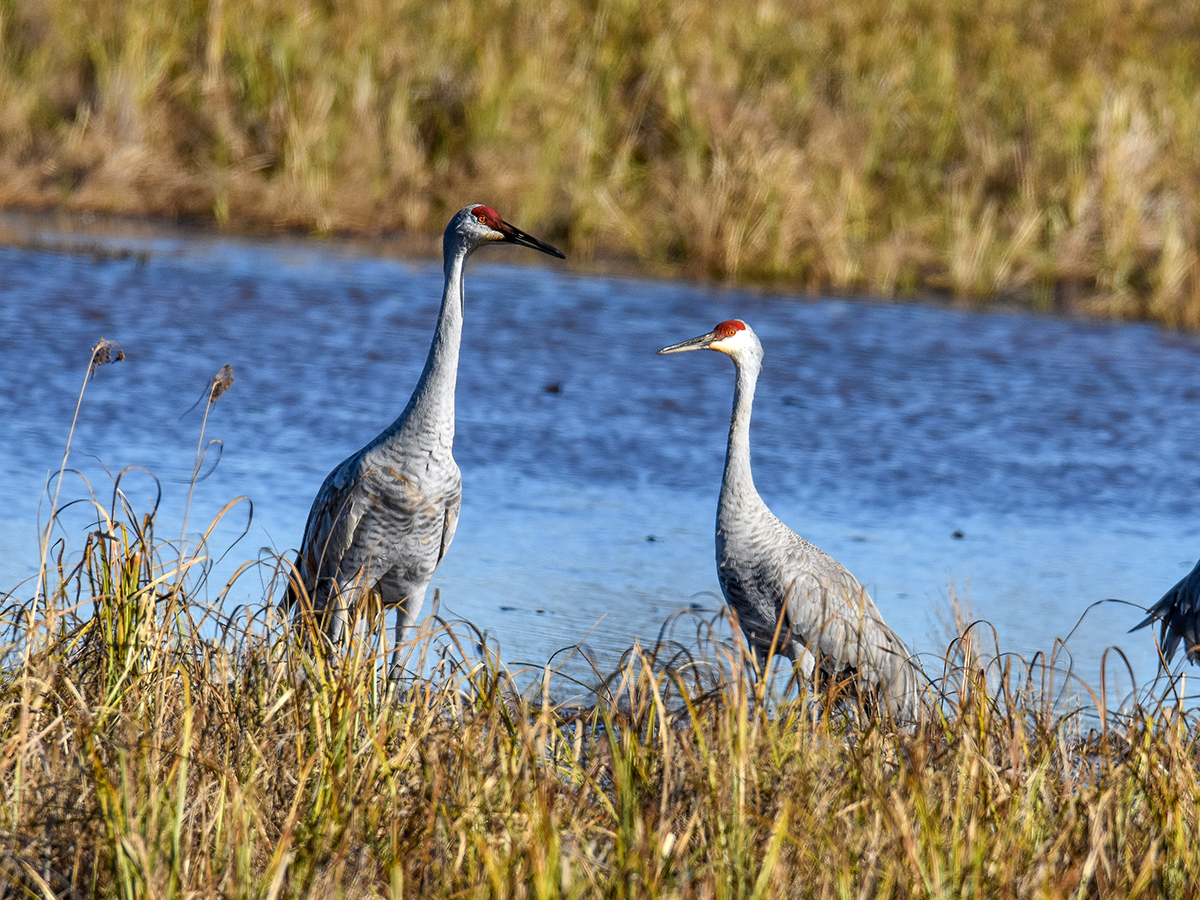The first Sandhill Crane I ever spotted was while en route to Itasca State Park in 2010. I initially assumed it was a deer, with its long legs and sandy-brown coloration. On closer inspection, I noticed its sizable bill, rusty-colored cap and feathers. I surmised that it was a crane-like bird, but it took a check-in with my Peterson Field Guide to identify it.
Fast forward to present day—Sandhill Cranes are regular seasonal visitors to our area in and around White Bear Lake, MN. We hear their unmistakable garoo-a-a calls as they fly over our house during spring and fall migrations.
The Sandhill Crane population is making a slow and steady comeback after near decimation in the 1800s due to hunting and habitat loss. State and federal protections have helped the population in Minnesota grow from 40 to 50 pairs in the 1940s to over 15,000 today.
The best times to see Sandhill Cranes are during spring and fall migrations, when they gather in large numbers. In the spring (late March to May), Carlos Avery Wildlife Management Area, near Forest Lake, MN, is reported to be a good place to view large numbers of cranes near the Twin Cities.
Around the fall migration (early September to mid-November), Sherburne National Wildlife Refuge and Crex Meadows Wildlife Area—just across the border in Wisconsin—are excellent places to visit.
And of course, keep your eyes peeled for these nearly tall beauties in corn fields, wetland areas and open prairies during the summer. They nest in small family groups throughout much of Minnesota, with the exception of southwestern part of the state.


JUST THE FACTS
Size: 3-4 ft tall with wingspan of 6–7ft
Coloring: Grayish, increasing rust color throughout summer. Bald red cap.
Voice: Loud, bugle-like call that sounds like garoo-a-a-a
Habitat: Open prairies, fields, marshes/wetlands
Diet: These omnivores eat a variety of foods depending on season, including: insects, snails, frogs, roots of aquatic plants, rodents, lizards, snakes, nestling birds, berries, seeds or grains.
Adapted from an article by Katrina Hase from the March/April 2022 Bird’s-Eye View newsletter.

